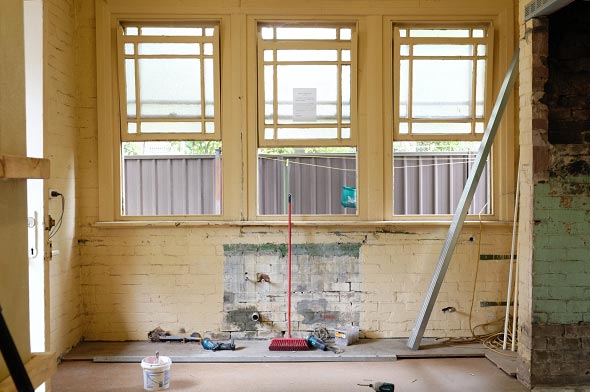Do's & Don'ts of Water Restoration.
Do's & Don'ts of Water Restoration.
Blog Article
They are making several good annotation regarding 5 Home Safety Tips To Reduce The Risk Of Fire And Water Damage in general in this great article down below.

Though water provides life, water intrusion on components where it's not meant to be can lead to damage. It can peel away surface areas as well as erode the foundation if the water saturates right into your structure. Mold and also mold also prosper in a wet environment, which can be dangerous for your health and wellness. Homes with water damage odor old and also musty.
Water can originate from lots of sources such as typhoons, floods, ruptured pipelines, leaks, and also drain concerns. In case you experience water damages, it would certainly be great to understand some safety precautions. Below are a few guidelines on just how to take care of water damage.
Do Prioritize Residence Insurance Policy Protection
Water damage from flood as a result of heavy winds is seasonal. However, you can additionally experience a sudden flooding when a defective pipeline unexpectedly bursts into your residence. It would be best to have house insurance coverage that covers both disasters such as all-natural calamities, and emergencies like damaged plumbing.
Don't Forget to Turn Off Utilities
This reduces off power to your whole residence, avoiding electric shocks when water comes in as it is a conductor. Don't neglect to turn off the primary water line shutoff.
Do Stay Proactive as well as Heed Climate Notifies
Tornado floodings can be very unforeseeable. Stay proactive and ready if there is a background of flooding in your neighborhood. If you live near a lake, creek, or river , listen to evacuation cautions. Obtain prized possessions from the first stage as well as basement, after that placed them on the highest possible degree. Doing so minimizes prospective building damages.
Don't Disregard the Roofing System
You can avoid rainfall damage if there are no openings as well as leakages in your roofing. This will prevent water from moving down your wall surfaces as well as soaking your ceiling.
Do Pay Attention to Tiny Leakages
A ruptured pipeline does not take place over night. You may observe bubbling paint, peeling wallpaper, water streaks, water stains, or dripping audios behind the wall surfaces. Have your plumbing fixed before it results in enormous damage.
Don't Panic in Case of a Ruptured Pipeline
Keeping your presence of mind is vital in a time of situation. Panicking will just intensify the problem due to the fact that it will certainly stifle you from acting quickly. Timing is vital when it comes to water damages. The longer you wait, the more damages you can anticipate. Thus, if a pipeline bursts in your house, instantly shut down your primary water shutoff to cut off the resource. Then disconnect all electric outlets in the area or switch off the circuit breaker for that part of your house. Ultimately, call a respectable water damages remediation professional for assistance.
Water offers life, water breach on components where it's not expected to be can result in damage. Homes with water damage scent stuffy as well as old.
Water damage from flood dues to hefty winds is seasonal. You might discover bubbling paint, peeling wallpaper, water touches, water spots, or dripping sounds behind the wall surfaces. When it comes to water damage, timing is crucial.
Some Do's & Don't When Dealing with a Water Damage
DO:
Make sure the water source has been eliminated. Contact a plumber if needed. Turn off circuit breakers supplying electricity to wet areas and unplug any electronics that are on wet carpet or surfaces Remove small furniture items Remove as much excess water as possible by mopping or blotting; Use WHITE towels to blot wet carpeting Wipe water from wooden furniture after removing anything on it Remove and prop up wet upholstery cushions for even drying (check for any bleeding) Pin up curtains or furniture skirts if needed Place aluminum foil, saucers or wood blocks between furniture legs and wet carpet Turn on air conditioning for maximum drying in winter and open windows in the summer Open any drawers and cabinets affected for complete drying but do not force them open Remove any valuable art objects or paintings to a safe, dry place Open any suitcases or luggage that may have been affected to dry, preferably in sunlight Hang any fur or leather goods to dry at room temperature Punch small holes in sagging ceilings to relieve trapped water (don't forget to place pans beneath!); however, if the ceiling is sagging extremely low, stay out of the room and we'll take care of it DO NOT:
Leave wet fabrics in place; dry them as soon as possible Leave books, magazines or any other colored items on wet carpets or floor Use your household vacuum to remove water Use TV's or other electronics/appliances while standing on wet carpets or floors; especially not on wet concrete floors Turn on ceiling fixtures if the ceiling is wet Turn your heat up, unless instructed otherwise

Do you like more info about Safety Tips To Prevent Fire And Water Damage? Leave feedback below. We will be glad to listen to your ideas about this article. We are looking forward that you visit us again soon. Do you know anybody else who is sincerely interested in the niche? Do not hesitate to share it. Thank you for your time. Kindly stop by our site back soon.
Report this page